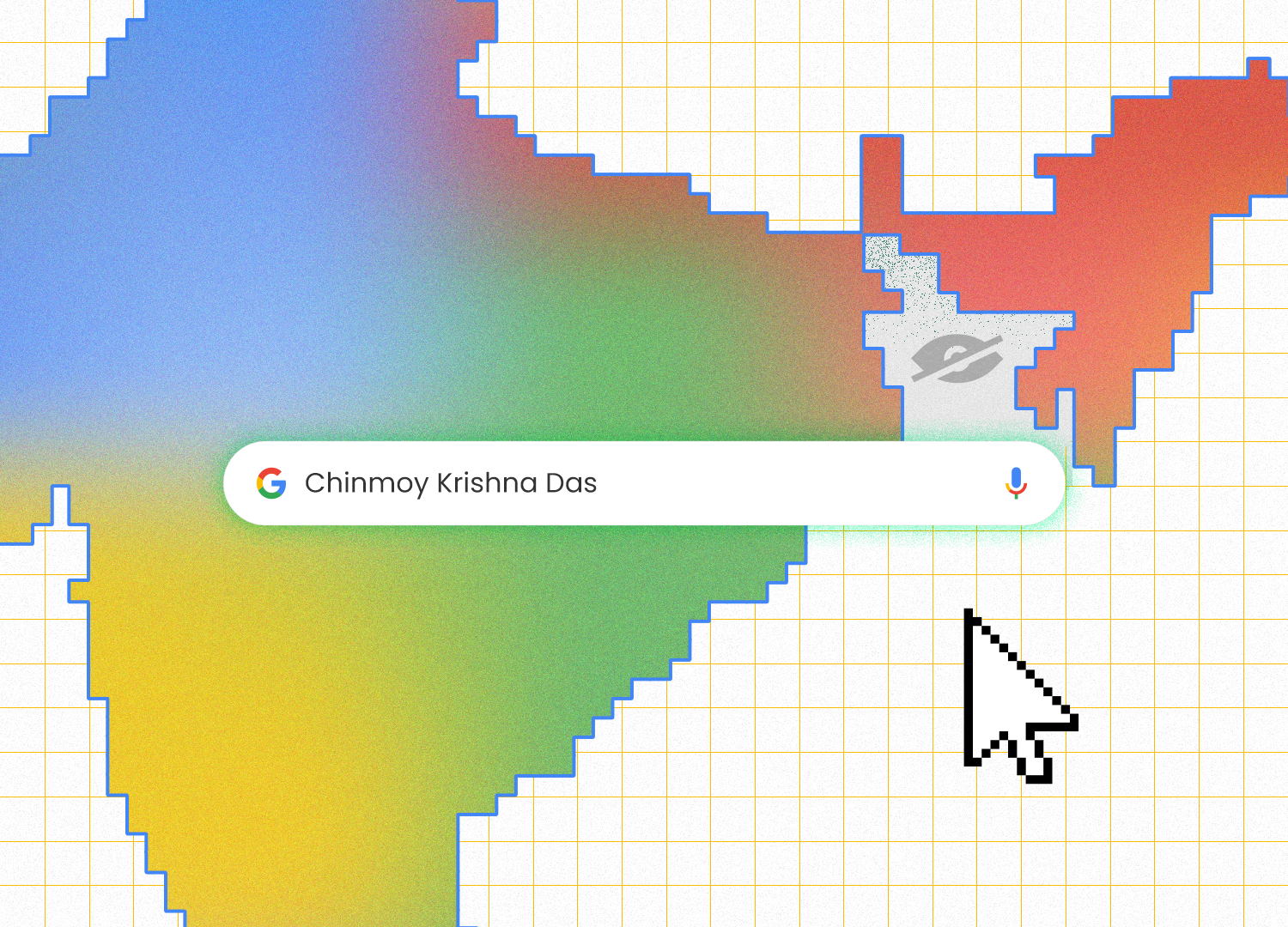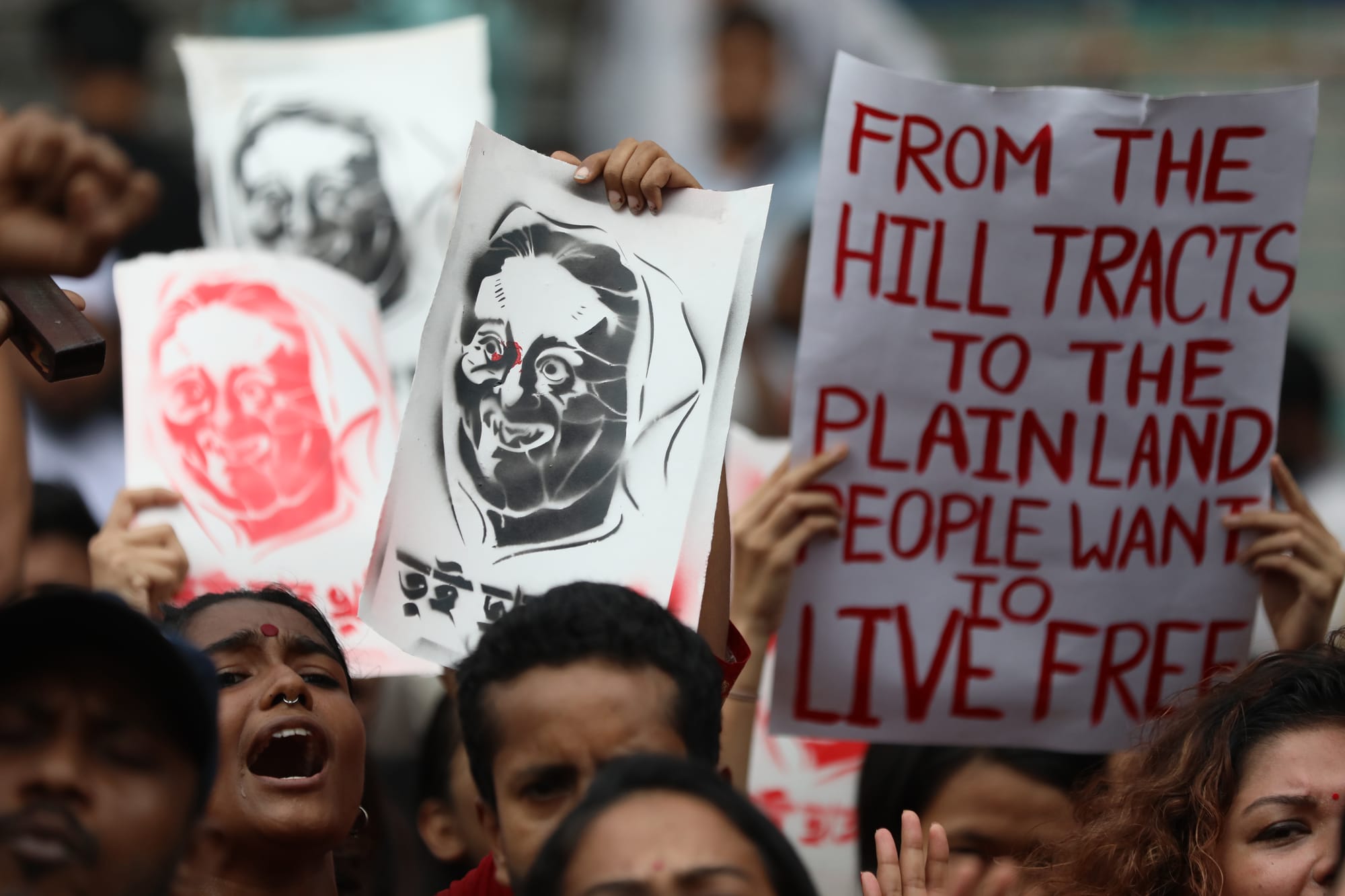How Google Search erases Bangladeshi journalism in favour of Indian media
A Western tech giant cast aside local, original journalism on a story rooted in Bangladesh in favour of an avalanche of divisive coverage from neighbouring India.

The recent arrest of Chinmoy Krishna Das on sedition charges has set off two sharply contrasting narratives—both worth a closer look.
Supporters of the Hindu monk claim he’s being silenced for spotlighting the plight of Bangladesh’s Hindu minority community. Critics, however, claim he orchestrated a divisive campaign to destabilise a fragile government reeling from chaos, after former Prime Minister Sheikh Hasina’s dramatic ouster from power.
For decades, Bangladesh’s Hindu minority has been central to the foreign policy strategy instituted by Hasina’s Awami League, exploited and showcased to legitimise its secular promises and pro-India posture. But when Hasina’s regime imploded under the weight of its own authoritarian excesses—marked by the massacre of hundreds of demonstrators—Awami League loyalists, including some Hindus, found themselves targets of violent reprisals. With Hasina seeking refuge in India, temples lay in ruins, their idols desecrated in attacks that bore the unmistakable stain of sectarian animus beyond the political chaos. Fear, as a result, ran through the Hindu community across the country.
That fear and tension erupted the most viscerally in Chattogram, where Das’s supporters clashed with police outside a courthouse, killing a Muslim lawyer and rousing anger across the nation.
Over in neighbouring India, however, news of Das’s arrest took centre stage, sparking a rallying cry among Hindu ultranationalists, culminating in a mob storming a Bangladeshi consulate in retaliation. Fact-checkers traced much of the frenzy to India’s vast Hindu nationalist social media networks, while critics say Indian Prime Minister Narendra Modi’s governing party stoked the flames for its own political ends, turning a neighbouring country’s tragedy into a tool for domestic leverage.
Yet, anyone Googling to learn these multi-layered nuances—original reporting by people on the ground, along with local context—would likely come away disappointed. Top results come almost exclusively from Indian outlets, most of which lack local correspondents and lean instead on secondary or social media sources. Bangladeshi news outlets, better positioned to provide firsthand coverage and local context, are conspicuously absent.
At the Tech Global Institute, we set out to determine why Google’s search results appeared so skewed. How did Indian media overshadow on-the-ground Bangladeshi journalism in a story so clearly rooted in Bangladesh?
What we found was stark.
Our analysis revealed a persistent pattern: regardless of where you are—Bangladesh, Australia, the EU, the UK, or the US—Indian news outlets overwhelmingly dominate Google results for keywords tied to this story.
Even within Bangladesh itself, Indian sources like Times of India, The Hindu, and Hindustan Times regularly grabbed top positions in the knowledge panel, top stories and video carousels, and the news tab (separate from Google News, the product), while credible Bangladeshi outlets—The Daily Star, Prothom Alo, or The Business Standard, for instance—were buried far down the list. Searching for “চিন্ময় কৃষ্ণ দাস” (the Bangla spelling) yielded a slightly better balance, yet Indian media still led in many parts of the world.
From Australia to the United States, Indian sites claimed up to 90% of top placements, leaving reputable Bangladeshi coverage languishing on the thirteenth or fourteenth page—places few users ever scroll to. Lesser-known Indian publications, like PGurus or DD News, comfortably outranked major Bangladeshi national dailies.
What is even more striking is that Google is perfectly capable of highlighting local coverage when it chooses. For example, on 16th December 2024, we searched for “madison school shooting” from both a mobile device and a desktop at different times and in different locations both within the US and outside. In all instances, local Madison-area outlets featured prominently, sometimes even outranking far more prominent national media. This shows that Google can identify a user’s region to a more granular level and prioritise local journalism.
So why does this capability fail when it comes to Bangladesh?
One explanation points to how Google accounts for market size, language dominance, and SEO-driven algorithms in its search ranking. India’s enormous publishing industry churns out a high volume of English-language news, much of it optimised for search engines. These outlets tend to have higher “domain authority,” meaning Google’s algorithm treats them as more established and trustworthy. By contrast, Bangladeshi publishers—often targeting Bangla-speaking audiences—can’t match India’s sheer volume or global SEO sophistication. As a result, local Bangladeshi reports on major events in their own country get sidelined, overshadowed by Indian perspectives and, at times, clickbait storylines bordering on disinformation.
Google’s public document says it ranks “hundreds of billions of web pages” according to relevance, freshness, authoritativeness and quality, factoring in PageRank scores, language cues, and location data. But as we see, the system favours high-engagement content—often sensational pieces that pull in more clicks and ad revenue. For smaller markets like Bangladesh, with fewer resources for extensive SEO campaigns, this means their stories and the voice of their communities are drowned out.
But the cost is more than unfair search engine results. It distorts the global narrative about events on the ground and heightens the risk of communal or political tensions in a region where they already run high.
Biased search results ripple far beyond everyday web browsing. Governments, multilateral agencies, corporate investors, and NGOs looking into regional stability often check top search hits as a litmus test. If they find mostly alarmist or one-sided reports—be it about alleged “genocide” or escalating sectarian strife—without balanced, locally sourced coverage, their decisions can rest on a skewed understanding. This warps public opinion, undermines diplomatic efforts, and sidelines necessary ground reporting on challenges faced by minority communities during the country’s political transition.
Such distortion is particularly worrying in South Asia, where cross-border rivalries flare easily. National media often amplifies or downplays stories for domestic political reasons. When Google lifts outlets from a dominant neighbouring country to the top, voices from smaller countries such as Sri Lanka, Nepal, or Bangladesh are cast out, fuelling resentment and frustration.
The downfall of Sheikh Hasina’s government and the arrest of a Hindu monk in Bangladesh—issues demanding localised insights—are instead dominated by one-sided Indian narratives, highlighting sensational angles and disinformation at the expense of nuance and local context.
There is a reason why recent events warrant more nuanced political and historical assessment. The tentpole of Hasina’s regime relied on promises to ward off threats of Jihadi terrorism, promises particularly made to Western diplomats advocating in favour of the global ‘war on terror’. Despite repeated attacks on Hindu minorities since the country’s independence, the alleged security and regional stability with a secular party at the helm provided the Awami League government international legitimacy. Upon her abrupt departure, therefore, diplomats and counterterrorism experts feared the rise of Islamist fundamentalism in Bangladesh and across South Asia, a sentiment amplified by Hasina’s son and adviser, Sajeeb Wazed, who appeared on Indian and Western media to warn about “rising terrorism” under the watch of the interim government.

With ultranationalist Indian media dominating search results, Hasina’s false promise as the secular guard risked garnering fresh legitimacy for her previous authoritarian tenure and undermining the intent of the popular uprising. More importantly, the interim government found itself firefighting disinformation, forcing it to offer less attention to combat actual instances of anti-Hindu attacks.
Google’s role as an information gatekeeper is enormous. By elevating certain sources at the expense of others, it inadvertently shapes the world’s view of crucial developments. If Google can prioritise Wisconsin news outlets for a local US search query, there are few practical reasons it can’t also give Bangladeshi outlets a fair shot for important Bangladeshi stories.
Countries like Bangladesh deserve to tell their own stories without being drowned out by larger neighbours. For an event as significant as the security of minorities who often fall prey to violence during political instability, local perspectives are crucial. People need real journalism that digs into context—not sensational, second-hand coverage—and Google’s search algorithms shouldn’t stand in the way.●
Sabhanaz Rashid Diya is a computational social scientist and Executive Director of Tech Global Institute. She previously served as the Head of Public Policy for Meta in Bangladesh.
Shahzeb Mahmood is the Head of Research at Tech Global Institute. He previously advised global tech companies.